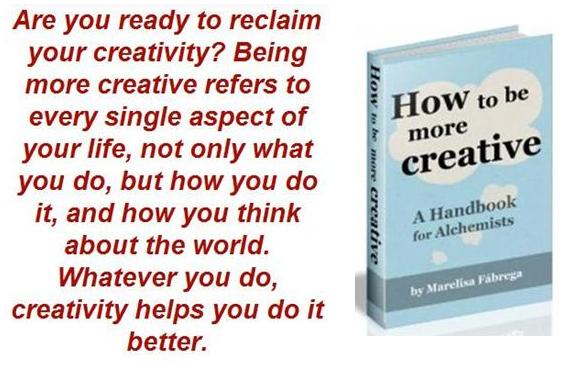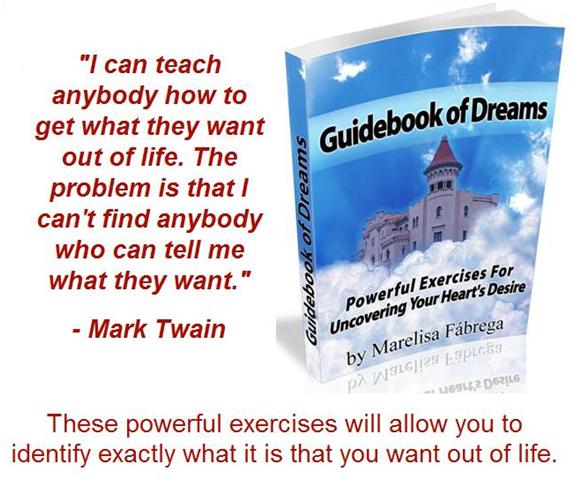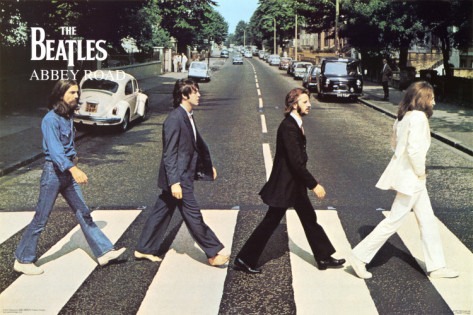 The key to goal success is the following: set a goal and then translate that intention into action. Easier said than done, right?
The key to goal success is the following: set a goal and then translate that intention into action. Easier said than done, right?
The good news is that there’s a simple way to make it much easier to follow through on the action that you need to take in order to achieve your goals. What you need to do is to start setting implementation intentions.
Setting implementation intentions is a concept that was introduced by psychologist Peter Gollwitzer. Basically, an implementation intention is an “if – then” plan (“if situation Y is encountered, then I will initiate behavior Z in order to reach goal X”). Below you’ll discover everything that you need to know in order to achieve your goals by setting implementation intentions.
Why Don’t People Take the Necessary Action To Achieve Their Goals?
A goal is a desired outcome. When you set a goal you’re giving yourself instructions to perform certain behaviors in order to achieve your desired outcome. The problem is that most people fail to follow the instructions that they give themselves.
As Gollwitzer explains, this failure to follow your own instructions, or to self-regulate, can manifest in one of two forms:
- You set a goal, but then you don’t get started on it (you need help with action initiation).
- You set a goal and you get started on it, but then you get pushed off track (you need help maintaining goal directed behavior).
These two failures to self-regulate are further explained below.
Failure to Get Started With Your Goal
Why do people set a goal and then fail to get started taking the necessary action in order to achieve their goal? This happens for three reasons: they forget to take the necessary action; they fail to seize opportune moments to act; and they have second thoughts at the critical moment.
- People forget to take the necessary action. For example, you set the goal of getting your spending under control, so you instruct yourself to write down all of your expenditures throughout the day. However, you keep forgetting to do so.
- People fail to seize opportune moments to act. As an illustration, you set the goal of writing a novel. You have a dental appointment and you arrive early; you don’t stop to think that this would be a good time to pull out your notebook and work on your novel; therefore, you waste the time reading a magazine. You may also fail to seize opportune moments to act when you’re not sure what action to take in order to achieve your goal.
- Second thoughts at the critical moment. For instance, you’re home from work, and dinner won’t be ready for another hour. You realize that this would be a good time to go out and get some exercise in order to achieve your goal of losing weight. However, you start thinking to yourself: “My favorite program is on, and I’m so tired. I think I’ll just sit on the couch and watch TV.”
Getting Derailed During Goal Striving
Even if people do succeed in getting started on their goal, it’s very likely that within a short period of time they’ll get derailed and stop taking the action necessary in order to achieve their goal. Again, this happens for three main reasons: enticing stimuli; falling prey to bad habits; and succumbing to negative states.
- Enticing stimuli. As an example, you set the goal of losing weight, and then you walk past a bakery and notice the most decadent-looking brownies you’ve ever seen in your entire life in the window display. You suddenly find yourself standing in the bakery, with cash in one hand and a brownie in the other.
- Falling prey to bad habits. For instance, you set the goal to quit smoking, but you have a longstanding habit of smoking right after lunch. It’s lunchtime; immediately after eating–as if on automatic pilot–you walk to the cigarette vending machine, buy a pack of cigarettes, and light up.
- Succumbing to negative states. When people are in a bad mood they have a tendency to prioritize mood repair over other goals. As an illustration, you set the goal of saving up for a ski trip in December, and you’ve actually gotten started saving money. Then someone else gets the promotion that you were gunning for at work. You get upset and hit the mall for some shopping-therapy, and you spend all the money you had saved.
What Are Implementation Intentions?
While goals specify what you intend to achieve (write a novel), implementation intentions specify the behavior you intend to take and the situational context in which you intend to take said behavior (as soon as my alarm goes off at 6:00 a.m. each morning I will make a bathroom visit, get a glass of water, and sit at my desk to write for an hour).
That is, implementation intentions specify the what, when, and where.
As stated in the introduction to this blog post, implementation intentions are written in an “if-then” format: “If it’s six o’clock and it’s a weekday morning, then I will make a bathroom visit, get a glass of water, and sit at my desk to write for an hour.”
How to Set Implementation Intentions
There are two different aspects you need to consider when setting implementation intentions:
- Identify the action that you’re going to take to achieve your goal, and how you’ll know when to take it.
- Identify possible obstacles to goal-achievement, and how you’ll deal with them.
First, you need to identify the goal directed behavior that you want to take, and the situational cue that will let you know that it’s time to take said behavior. For example, suppose that your goal is to lose weight. You could decide that you’re going to start taking forty minute walks.
How will you know when to go for a walk? You could decide that you’ll know that it’s time to take action if it’s a weekday, and it’s 5:30 p.m. Your implementation intention would then look as follows: “If it’s 5:30 p.m. on a weekday, then I’ll go out for a forty-minute walk”. The situation–it’s a weekday and it’s 5:30 p.m.–activates the action that will allow you to achieve your weight loss goal: going for a forty minute walk.
Second, you need to identify the obstacles that could push you off track and interfere with your goal follow-through. Once you’ve identified these obstacles, you create an if-then statement in order to deal with each one. As an illustration, suppose that you’re trying to lose weight but you’ve been derailed from your efforts in the past by these three situations:
- In the afternoon you feel sluggish, so you usually walk over to the vending machine and get a chocolate bar.
- When you feel stressed you have a tendency to overeat.
- They only have greasy food in the company cafeteria.
In order to shield your goals from these obstacles, you need to create if-then statements, such as the following:
- If I’m feeling sluggish in the afternoon, then I’ll drink a glass of water and eat a handful of almonds.
- If I’m feeling stressed, then I’ll do some yoga.
- If it’s time for lunch, then I’ll walk over to the salad shop around the corner.
Make sure that your implementation intentions are specific. Avoid vague implementation intentions such as the following:
- If I want to smoke, then I’ll distract myself by doing something else (you want to specify how you’ll distract yourself).
- If it’s morning, then I’ll work on my novel (you want to specify the time and day).
Here are some more examples of good implementation intentions:
- Goal: Start flossing.
- Implementation Intention: If I’ve just brushed my teeth, then I’m going to floss.
- Goal: Keep track of my spending.
- Implementation Intention: If I take out my wallet to pay for an item, then I’m going to take out a small notebook and write down what the item is and how much it costs.
- Goal: Quit smoking.
- Implementation Intention: If I feel like smoking, then I’m going to chew gum.
- Goal: Lose weight.
- Implementation Intention: If I’m walking down the street and I see a bakery up ahead, then I’m going to cross the street and look the other way.
- Goal: Drink more water.
- Implementation Intention: If I walk past the water fountain at work, then I’m going to stop and have five drinks of water.
- Goal: Conduct weekly reviews.
- Implementation Intention: If it’s 6:00 p.m. on Sunday, then I’ll go into my home office and conduct a weekly review.
- Goal: Save money.
- Implementation Intention: If I’m at the bank cashing my paycheck, then I will deposit 10% of it in my savings account.
- Goal: Stop reacting in anger.
- Implementation Intention: If I feel myself getting angry or upset, then I will take a deep breath and repeat the mantra “Peace” three times.
- Goal: Write a novel.
- Implementation Intention: If I have some waiting time–whether it’s waiting for the dentist to see me, waiting for my son to finish soccer practice, and so on–, then I will take out my notebook and work on my novel.
Conclusion
With implementation intentions you’re planning ahead of time the specific action that you’re going to take in order to achieve your goals, and when and where you’re going to carry out said action. You’re also creating a plan on how to continue moving forward even when an obstacle presents itself.
Implementation intentions are a fantastic tool for helping you to achieve your goals.
I hope that you’ll start setting implementation intentions so that you’re successful in achieving the goals that you’ve set for the year that’s just begun. In addition, you can put your goal-achieving into overdrive with my “How to Live Your Best Life” system.
Go ahead and share some of your implementation intentions in the comments section. Here’s one of mine:
- Goal: Stretch after jogging.
- Implementation Intention: If I’ve just come back from a jog, then I will stretch for five minutes–following my old stretch routine–at my building’s entrance.


Related Posts:
1. Time Management Secret: Do It Tomorrow
2. Launch A 365-Day Project In 2013
3. 18 Powerful Tips For Overcoming Procrastination
4. 7 Ways to Supercharge Your Motivation
5. Seven Ways to Overcome Inertia and Get Yourself Unstuck
Did you enjoy this article? Subscribe to “Daring to Live Fully” by RSS or by email, and get free updates.

































 Marelisa Fabrega is a lawyer and entrepreneur. She holds a Bachelor of Science in Business Administration from Georgetown University in Washington, D.C., as well as a Juris Doctor from the Georgetown University Law Center. You can learn more about her
Marelisa Fabrega is a lawyer and entrepreneur. She holds a Bachelor of Science in Business Administration from Georgetown University in Washington, D.C., as well as a Juris Doctor from the Georgetown University Law Center. You can learn more about her 





